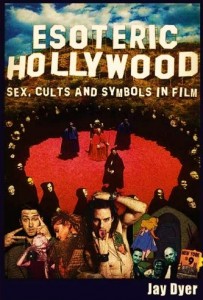 Jay Dyer
Jay Dyer
21st Century Wire
Words, or logoi, form the basis of all reality. I have written many times and even lectured on the doctrine of St. Maximos the Confessor concerning the archetypal patterns or logoi that form the divine ideas that undergird all reality. All these logoi are one in the Logos, and ultimately give all distinct objects their meaning and unity.
The logoi become a unifying, objective metaphysical principle in the divine Person of the Logos. This is why Genesis 1 describes God speaking and creating through His Logos. What is interesting about the recent philosophically-focused science fiction film Arrival is that, while scratching and floundering around in the dark, it hits upon this issue – and predictably provides an incoherent, inconsistent solution, as we will see.
Arrival is a film about language and meaning, and ultimately about the Tower of Babel, with the author of the film’s story also penning “Tower of Babel.” In modern philosophy, the dismissal of metaphysics was replaced with linguistic philosophy, where endless questions and disputes about how words can “mean,” when words are socially constructed symbols becomes a loop of circular contradictions, much like the alien language in the film. I have written about linguistic philosophy and questions in the past, but I think the point was missed by most readers. My point was to offer a version of the transcendental argument based on language:
“What I think follows from this [basic sentence structure] is that we see an interpersonal interaction occur with a narrative structure even in the most trivial and localized events of human experience. So what can be fleshed out from this is that numerous things must be the case for this event to occur, which everyone (even a solipsist pretender) admits occurs. There is a beginning, with the event of the concept being expressed by the communicant to the one or more receivers. There is the actual event of communication transpiring and being received and processed by the receiver(s). Then we have the contingent period of response and further communication for however long. Then, the communication act ends. So we see the narrative structure present.
Also, we can flesh out other transcendentally necessary preconditions for this interaction to occur that are crucial to the overall argument for God. We can make a list:
1. That the subjects in question are separate entities and monism isn’t true.
2. That subjects experience phenomena of the external world.
3. That the subjects are distinct selves or persons that exhibit identity over time.
4. That the subjects themselves have a certain historical narrative – metanarrative – that “explains” or gives their being meaning, as well (this is my overall argument).
5. That the given subjects experience the phenomena in a kind of time-bound sequence.
6. That the subjects can internalize meaning from abstract concepts that pass from one brain to the other.
7. That the concepts in question have some kind of universal ontological reality apart from the interaction wherein they are..participated(?) or incarnated (?)
8. That the meaning of the concepts internalized by the communicants inheres over time.
9. That the beginning –> middle –> end narrative structure, connected to the beginning –> middle –> end time structure, also subsists and recurs over time.”
In Arrival, mankind is one the brink of destruction due to the divisions caused by language – and by extension, race, gender, nation and culture. Linguist Luise Banks (Amy Adams) is a strong, independent gal who, having done translations for military intelligence, is recruited to decipher the sound and speech of an alien squid race that have “arrived.” Mistaking the alien coffee stain language for a giant middle finger “fuck you,” earth goes into a hissy fit, with Russia and China threatening to launch an attack on the hovering Childhood’s End-eque crafts. Much like The Day the Earth Stood Still, the alien race attempts to display to mankind they are their own worse enemy, not some outside force from the beyond.
The chief source of division, in the metaphysical, physical and cultural senses, begins with language. Language is the embodiment of a people’s way of life and thinking in symbolic forms. These symbolic forms, while having a degree of malleability, are not mere token sounds and forms as the nominalists have long said, but refer to real concepts and ideas – to spirit. Given the film’s modernist presuppositions, we can thus see how it functions as globalist propaganda, as globalism’s presupposition is its war on all distinctions.
In the globalist-nominalist war on reality, all meaning, all concepts and all differences are themselves the source of evil. Evil, for the long trek of dialecticians, is given form and substance in the existence of distinctions. Since this philosophical error dates back to at least Plato, Egypt or ultimately Babel, the biblical account is here relevant. At Babel, God separated the nations through language because the attempt of idolatrous mankind was to rebel against heaven by creating a world government.
The Nimrod State was one in which attempted to obliterate all distinction. Since man and woman are differ in biology and thought patterns, the source of all problems must be their difference – a mantra we see promoted ad nauseam in today’s globe-feminism. Gender, it is concluded, must also be a social construct. The same arguments are made for races, or ethnoi – the source of mankind’s ills must be we merely perceive blacks and whites to be different.
In Arrival, this is made evident with the film’s portrayal of the Eurasian nations irrational and reactionary hatred of the aliens because they are different and misunderstood. Likewise, the Eurasian rejection of the aliens sparks a reaction against the West, and communications are cut off. Enter Amy Adams as the new incarnation of the goddess, the gnostic pistis sophia who mystically overcomes time-bound relations to see within the alien language the transcendence of time.
Surprisingly, her book is even titled the same as Leibniz’s famous Characteristica Universallis, where Leibniz proposed the creation of a logical language that could be universal. Leibniz’s language, which would be formative in the development of computers, is based on a Platonic metaphysic – Amy Adams’ mystical experience of seeing linguistic references beyond their temporal and spatial settings is also Leibnizian, yet attempts to solve the question of time through dialectics.
In other words, when language is viewed as a limiting factor (and it is), the assumption is that it is limited because it is a temporal phenomenon that is applied to something distinct from something else. The author’s Asian pedigree is evident here, insofar as the Far East has always sought to overcome dialectics of this nature through the destruction and dissolution of distinctions, because distinction is presumed to imply division – when it does not.
In Orthodox Theology, the one and the many are not in tension. There is no metaphysical primacy to the one, over against the many, or vice versa. This is because, as many Orthodox theologians explain, there is no ultimacy in God of the One over against the Persons, nor are the many logoi lesser because they are one in the Logos. Since ultimate reality in most Far Eastern philosophies is impersonal and wholly other, there is no reason for being itself. In fact, our world must of necessity be some mirage or illusory manifestation of some false reality or dream state.
The attempt to blend all of reality into a nonexistent dream state or maya is the ultimate attack on the goodness of God’s creation, that the world of time, of matter, of differences and distinctions, is not healed or saved through the dissolution of all individual persons or identities. In Orthodox icons, the historic experiences – even to the point of race, gender, and idiosyncrasies – are preserved in the holy art. Jesus is never portrayed as black or Asian because he wasn’t black or Asian – he was a Hebrew man, and his glorified body retains those characteristics – even to the point of retaining the wounds on His side.
Orthodox Icons are a kind of language, a window into heaven and the heavenly realities and show man his words and concepts are not so divorced from spirit and the divine as to be meaningless. For the film Arrival, words and meanings for humans are themselves evils in some sense, because they are mirror reflections of the differences of races, cultures and genders – and as a rabid piece of globalist propaganda, they must be obliterated. That is the message of the film. However, just like at Babel, all of mankind’s attempts to build a world government on these monist assumptions will be frustrated precisely because they are alien to man. The source of wars, enmity, hatred and evil is not difference and distinction, it is the choosing against the good, against God’s Law. Language itself is a transcendental, an indirect argument and proof for both God and the spiritual realm.
For a more comedic take, see my video here:
READ MORE HOLLYWOOD NEWS AT: 21st Century Wire Hollywood Files
To hear Jay’s full podcasts, see more information and learn how you can become a subscriber to JaysAnalysis.
Jay Dyer is the author of the forthcoming title, Esoteric Hollywood: Sex, Cults and Symbols in Film from Trine Day. Focusing on film, philosophy, geopolitics and all things esoteric, JaysAnalysisand his podcast, “Esoteric Hollywood,” investigates the deeper meanings between the headlines, exploring the hidden aspects of our sinister synthetic mass media matrix.
















